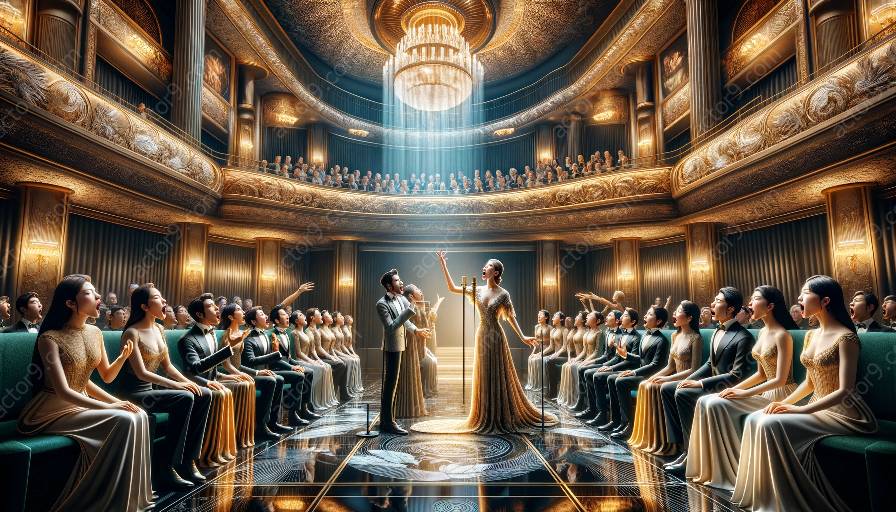Vocal techniques are a critical component of collaborative and ensemble-based performances, enabling artists to communicate and express through the power of the human voice. Extended vocal techniques, in particular, further expand the scope of vocal expression and creativity, offering a wide array of unconventional and experimental methods for vocalists to explore. In this comprehensive topic cluster, we delve into the significance, applications, and compatibility of extended vocal techniques in collaborative and ensemble-based performances, shedding light on their transformative role in modern music.
Understanding Extended Vocal Techniques
Extended vocal techniques refer to innovative methods of vocal production that go beyond traditional singing and vocalization. These techniques encompass a broad spectrum of sounds, including but not limited to vocal fry, overtones, throat singing, multiphonics, and glottal clicks. These unconventional vocal approaches allow vocalists to produce a diverse range of timbres, textures, and expressions, often pushing the boundaries of traditional vocal performance.
The Collaborative Nature of Extended Vocal Techniques
Within collaborative and ensemble-based performances, extended vocal techniques play a pivotal role in fostering artistic experimentation and sonic exploration. Vocalists collaborating with instrumentalists, composers, and fellow vocalists can integrate these techniques to create new, innovative sonic landscapes that transcend conventional musical boundaries. Through collaboration, vocalists can combine extended vocal techniques with instrumental textures and electronic effects, resulting in compelling and immersive musical experiences that captivate audiences.
Enhancing Expressive Capabilities
Extended vocal techniques also enhance the expressive capabilities of vocalists within ensemble settings. By incorporating these unconventional methods, vocalists can convey a wider range of emotions, narratives, and sonic atmospheres, thereby adding depth and complexity to collaborative musical compositions. Whether it's the use of multiphonics to create ethereal harmonies or vocal fry to evoke raw, primal energy, these techniques enable vocalists to contribute uniquely to the collective artistic vision.
Compatibility with Vocal Techniques
The compatibility of extended vocal techniques with traditional vocal techniques is a point of significant interest. While extended vocal techniques may diverge from conventional vocal practices, they are not necessarily to be seen as separate entities. Instead, they can complement and expand upon existing vocal techniques, offering vocalists new tools for self-expression and musical innovation. When integrated thoughtfully, extended vocal techniques can coexist harmoniously with traditional singing, enriching collaborative and ensemble-based performances with their distinctive sonic qualities.
Pushing Artistic Boundaries
Ultimately, extended vocal techniques serve as catalysts for pushing artistic boundaries within collaborative and ensemble-based performances. By embracing these unconventional methods, vocalists can break free from established norms, paving the way for groundbreaking musical interactions and sonic experiments. This progressive approach encourages collaboration across diverse musical genres and forms, leading to the creation of truly unique and boundary-defying performances.
Conclusion
In conclusion, the role of extended vocal techniques in collaborative and ensemble-based performances is multi-faceted and transformative. These techniques not only expand the sonic possibilities within vocal performance but also fuel artistic innovation and collaboration. Their compatibility with traditional vocal techniques highlights their potential to coalesce seamlessly within ensemble settings, yielding compelling and immersive musical experiences. As vocalists and musicians continue to explore the diverse realm of extended vocal techniques, they open doors to new creative horizons, enriching the landscape of collaborative music making.









































